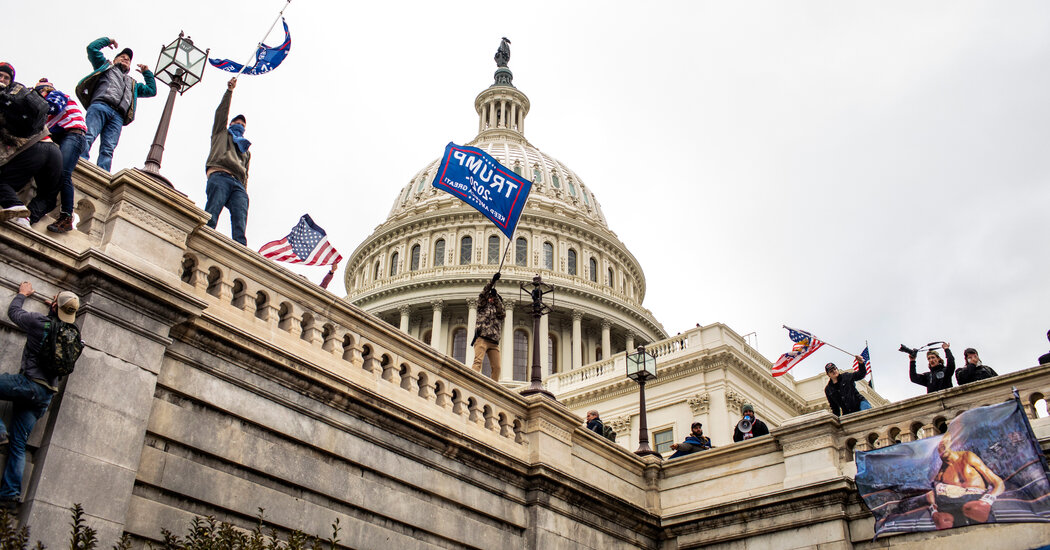With Affirmative Action Decision, College Admissions Could Become More Subjective
In the Supreme Court decision striking down racial and ethnic preferences in college admissions, Chief Justice John G. Roberts Jr. had harsh words for Harvard and the University of North Carolina, calling their admissions process “elusive,” “opaque” and “imponderable.”
But the court’s ruling against the two universities on Thursday could lead to an admissions system that is even more subjective and mysterious, as colleges try to follow the law but also admit a diverse class of students.
Officials at some selective institutions predicted that there would be less emphasis on standardized metrics like test scores and class rank, and more emphasis on personal qualities, told through recommendations and the application essay — the opposite of what many opponents of affirmative action had hoped for.
“Will it become more opaque? Yes, it will have to,” said Danielle Ren Holley, who is about to take over as president of Mount Holyoke College. “It’s a complex process, and this opinion will make it even more complex.”
In an interview, Edward Blum, the founder and president of Students for Fair Admissions, the plaintiff, defended what he called “standard measurements” of academic qualifications, citing studies that showed test scores, grades and coursework helped determine which students would thrive at competitive schools.
He promised to enforce the decision, saying that Students for Fair Admissions and its counsel “have been closely monitoring potential changes in admissions procedures.”
“We remain vigilant and intend to initiate litigation should universities defiantly flout this clear ruling,” he wrote in a statement on Thursday.
It would be nearly impossible, however, to eliminate any mention or suggestion of race in the admissions process — starting with applicants’ names. And in the decision, Justice Roberts specifically kept the door open to consider racial or ethnic background in someone’s lived experience.
“Nothing in this opinion should be construed as prohibiting universities from considering an applicant’s discussion of how race affected his or her life, be it through discrimination, inspiration or otherwise,” he wrote.
Still, he warned that the personal essay could not play a stealth role in telegraphing race. “In other words, the student must be treated based on his or her experiences as an individual — not on the basis of race,” he wrote. “Many universities have for too long done just the opposite.”
Universities, including Harvard and U.N.C., said on Thursday that they would comply with the ruling. But for outside skeptics, untangling a university’s intentions will be challenging. How can they know whether an admissions decision was based on an essay about personal grit — or the race of the applicant that it revealed?
“I think a very plausible outcome of this will be that schools will just cheat and say, ‘Let’s see who gets sued,’” said Richard Sander, a law professor at the University of California, Los Angeles, who has been critical of affirmative action. “The chances of an individual school getting sued are low, and the cost of suing is really high.”
Some education officials have already discussed how to leverage the essay. Students should tailor their admissions essays to describe how race had affected their lives, said Shannon Gundy, an admissions official at the University of Maryland, in a recent presentation sponsored by the American Council on Education.
“Right now, students write about their soccer practice, they write about their grandmother dying,” she said, adding: “They don’t write about their trials and tribulations. They don’t write about the challenges that they’ve had to experience.”
Colleges could also ask for other more pointed essays, along the lines of the “diversity, equity and inclusion” statements that have become a familiar part of faculty hiring.
Ms. Holley, the incoming Mount Holyoke president, imagined a question that would say something like: “One of the core values of Mount Holyoke College is diversity of all kinds. Please tell us why you value it, and what you think you bring to the Mount Holyoke community in terms of diversity.”
College officials are predicting that the decision will lead to an immediate drop in the number of Black and Hispanic students at selective universities, echoing the experiences of California and Michigan after those states adopted bans on affirmative action at their public universities years ago. Black students at the University of California, Berkeley, made up only 3.4 percent of last fall’s incoming freshman class, a quarter-century after the ban took effect.
But many of the 100 or so schools that practice affirmative action have been planning for this moment for months, if not years. And they have already made moves toward a “race-neutral” admissions era — one that tries to follow the letter of the law, while finding ways to keep the ethos of affirmative action.
Academic rigor is still important, but standardized tests? Not needed, and in some cases, not even read.
Schools are increasingly giving preferences to high-achieving students from low-income families or to “first-gen” applicants — the first in their families to go to college. They are pouring money into supporting students and offering more need-based financial aid.
Some selective colleges will also most likely play a much more direct role in nurturing prospective applicants.
The University of Virginia, for example, announced a plan this month to target 40 high schools in eight regions of the state that had little history of sending applicants. Duke University just promised full tuition grants to students from North and South Carolina with family incomes of $150,000 or less.
“The hardest part really is identifying and recruiting the students,” said Alison Byerly, president of Carleton College, which she said would expand its partnerships with community organizations.
The students are out there, said L. Song Richardson, president of Colorado College. “If we believe that talent is equally distributed” across demographic groups, she said, “then you would expect an unbiased recruitment process to result in a diverse class.”
Some educators believe that California’s experience after its 1996 ban on affirmative action shows that such programs can work. The U.C. system overall admitted its most diverse class ever in 2021. But recruiting was expensive; the price was in the hundreds of millions of dollars, and the top campus, Berkeley, is still struggling to catch up.
The risks are different for some public universities, like the University of North Carolina or the University of Virginia, which have already had run-ins with conservative politicians over “diversity, equity and inclusion” policies. They will very likely tread carefully when it comes to any murky race-neutral policies.
“One of the real movements you see from public universities is to be as apolitical as they possibly can, in red states and in blue states,” said Gordon Gee, the president of West Virginia University. “It’s kind of a Bud Light moment,” he said, referring to the beer company’s ill-fated hiring of a transgender spokeswoman that led to a boycott.
There could also be pressure to blow up the entire process, eliminating preferences for the children of alumni and donors, who tend to be white and wealthy.
So far, most schools have resisted those entreaties, saying that these preferences build community and assist in fund-raising. But with cynicism around college admissions high and many believing the system is rigged for the well off and well connected, the court’s decision could force a reckoning.
“This is a big setback to racial justice, but it’s also an opportunity,” said Jerome Karabel, a U.C. Berkeley sociologist who has studied college admissions. “Now is the time to go back to the drawing boards and see what we can do. There are a million ideas out there.”
Stephanie Saul contributed reporting.


